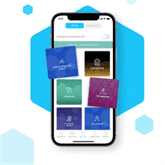Make sure you keep your apps and your phone software updated for maximum security. Mobile ransomware is a malware method that uses an app to hold your phone ransom until you give the hacker the information they want. You install an app that looks legitimate, and when you run it, it encrypts your information so that you can’t access it. The app locks your phone with a custom screen and asks you to pay to get your data and information back. The first thing you need to know is how hackers and criminals operate to get your banking information.
- After the three most popular features, older (i.e., 56+) mobile banking users’ importance ratings drop off significantly from that of younger users.
- If you do not use them properly, you may face privacy based online threats, opening your crucial personal data to hackers.
- Digital banking, in the traditional sense, is cumbersome, branched and technically complex.
- If successful, attackers can access sensitive user data, as well as read and tamper with data transferred between the server and the client application.
- Prior to the collaboration with Binariks, the customer used a variety of independent applications that offered various services connected to the Swedish Bank ID verification.
Overall, not a single server side had a security level better than “medium.” Three had a security level that was “low,” and one “extremely low.” The security level of each application was assessed manually, using black-, gray-, or white-box methods with the assistance of automated tools. Black-box testing means looking at an application from the perspective of an external attacker who has no prior knowledge of the application. Gray-box testing is similar to black-box testing, except that the attacker is a user who has some privileges. White-box testing refers to security analysis that makes use of all relevant information about the application, including its source code. Uber-like banking products offer services when (and where) users need them.
GDPR Services
Banks can use predictive analytics-based fraud detection software to detect fraud across multiple channels involved in payment processing. This could include recurring payments for financial services such as financial advisory or eCommerce payments that may involve a separate processing service. Additionally, banks can use this software to detect fraud in mobile apps for banking or remote ordering and paying for goods and services. Binariks has robust experience in creating fintech apps that adhere to the specific mobile banking compliance requirements and enable security at each stage of product development. The mobile banking compliance requirements also concern all third-party service providers and partners that have access to user data.

Morgan Chase spending nearly $600 million each year to strengthen its cyber defenses and in the face of “a constant stream of attacks.” This is not surprising. Research by the Boston Consulting Group has found banks and financial institutions prescriptive security in banking are 300 times more at risk of cyber-attack than companies in other sectors. LEaders also know the business better than the cybersecurity professional and can get us information and solutions that we couldn’t achieve on our own.
Science X Account
The second most highly rated feature—by 74% of users—was the ability to turn payment cards on or off, followed closely by the 71% of users who said mobile deposit is a critical or important feature. Securing data and funds is not just the job of developers; users, too, play a vital role in keeping themselves safe. In 87 percent of cases, user interaction is required for a vulnerability to be exploited. By jailbreaking or rooting, sideloading applications from unofficial sources, visiting suspicious websites, and following dodgy links from SMS and chat messages, users actually help hackers and put their data at risk. Request data from the server only as needed by the application and delete it when finished.

• Adoption of advanced technologies that helps in identifying and reacting to the threats before they occur is anticipated to fuel the growth of the market. The second type, the predictive approach, is reacting to potential threats. It’s a type of approach that predicts what can go wrong and implements various protective measures.
Return on experience on Tokyo 2020
The exchange of loads of sensitive data worth billions of dollars takes place in a year. Duplicate Flash Player is a video application which is either installed via an infected SMS or predatory E-Mail that contains some malicious download link. Once the mobile device users install the app over a smartphone, it requests the mobile phone administrator rights via a permission prompt.

The software can then notify a human monitor of any deviations from the normal pattern so that they may review it. The monitor can accept or reject this alert, which signals to the machine learning model that its determination of fraud from a transaction, application, or customer information is correct or not. Data science dashboards for those working on the machine learning model once it is implemented typically allow access to the data from which the software made its correlations. This allows banking leaders and data scientists to develop a more keen understanding of how the software may have reached its conclusions, or at least which data is likely to have given rise to its correlations. We begin with an overview of machine learning for fraud detection in banking. For a growing number of consumers, a mobile app is the primary way they interact with their checking account (and, in essence, their bank).
Client-side vulnerabilities
Along with this, PSD2 regulations also provide a strong defence mechanism against fraudulent activities and intends to increase digital security and enhance the usage of digital documents. Furthermore, these technologies will provide a strong authentication for mobile banking solution and wireless carriers of banking. Many entities like payment cards, merchants, card brands, and issuing banks play a significant role in an online transactions.
So, the key is to implement these online security measures with utmost care. Security researchers are constantly discovering new malware that targets mobile banking apps. One of them is FakeBank, a spyware that monitors SMS activity for incoming verification messages from a customer’s bank. When a mobile banking user gets an SMS with a verification code, the spyware copies the contents and sends it to fraudsters.
A new era in mobile banking fraud
Until a few years ago, off-site banking was only preferred by tech-savvy customers who were dealing with advanced technology in their daily lives. For other people, regular on-site banking was the preferred method of carrying out transactions. DataVisor claims that their software was able to uncover 30% more fraud at an accuracy rate of 90%. The case study also states the false positives amounts to 1.3% of those fraud detection instances. They needed a risk scoring application that could run through new account applications and only accept those that revealed a low risk rate for fraud.
These “sideload” apps, which are downloaded from unofficial sources, might conceal malware that is dormant until a user launches a legitimate banking app. Then the Trojan creates a pop-up overlay that https://www.globalcloudteam.com/ mimics the bank’s login page. When customers enter their username and password, they are seamlessly directed to the legitimate banking app login page, with no idea that they have been scammed.
Ensure strong customer authentification
Since the early 2010s, major banks have used anomaly detection – an AI technique for identifying deviations from a norm – for automating fraud, cybersecurity, and anti-money laundering processes. Banks already do plenty to identify and prevent fraudulent activity related to mobile banking—but it clearly hasn’t eliminated consumers’ concerns. I can already hear the IT departments complain, arguing that it’s not cost-effective to deploy multiple versions of the mobile banking app or to maintain a number of standalone apps. Cornerstone asked mobile banking users to rate features on a scale that included critical, important, nice to have, and not important.
